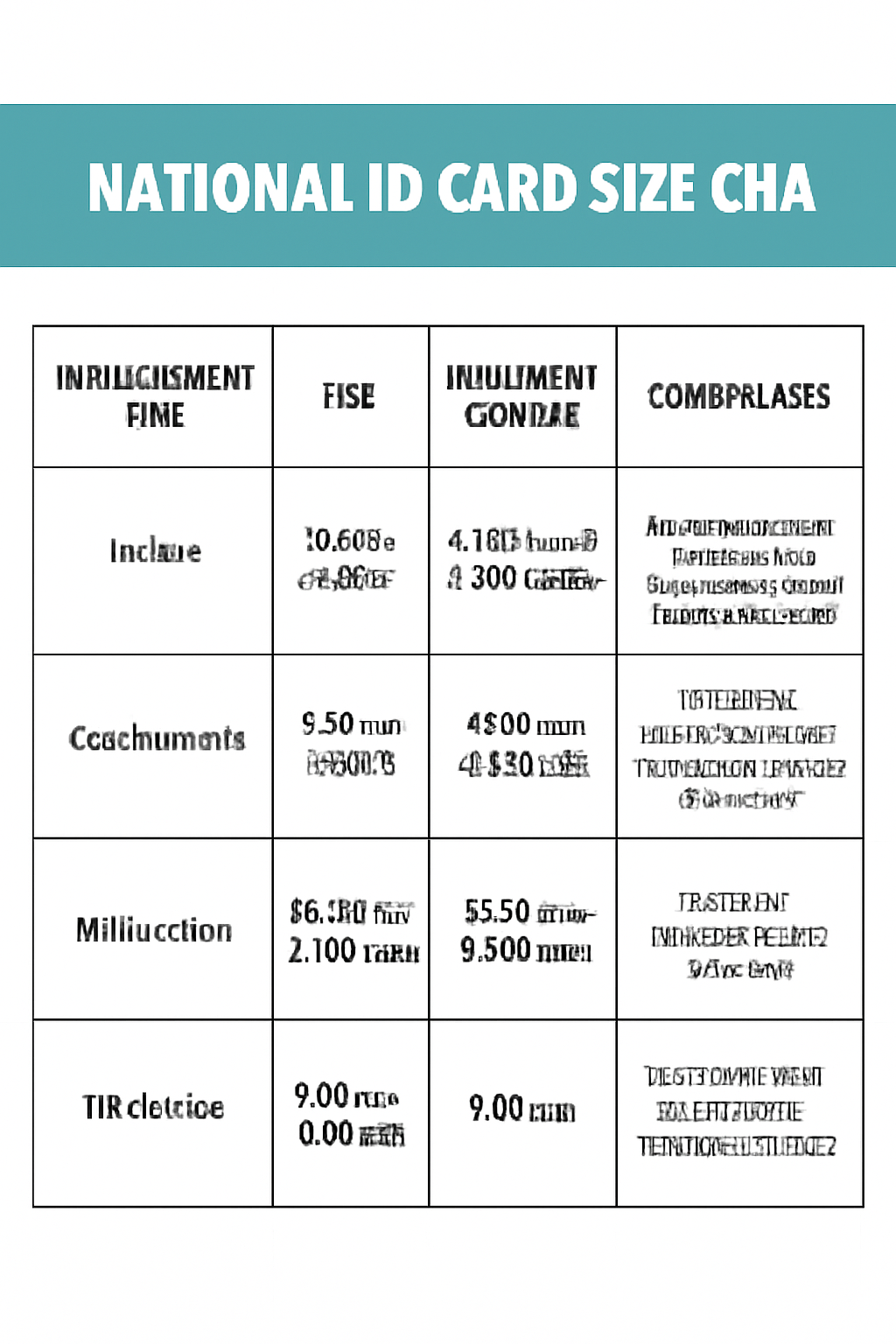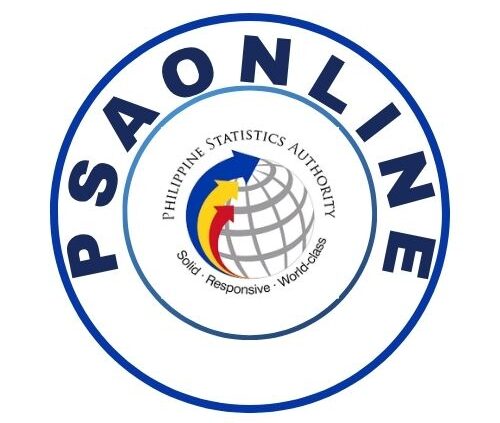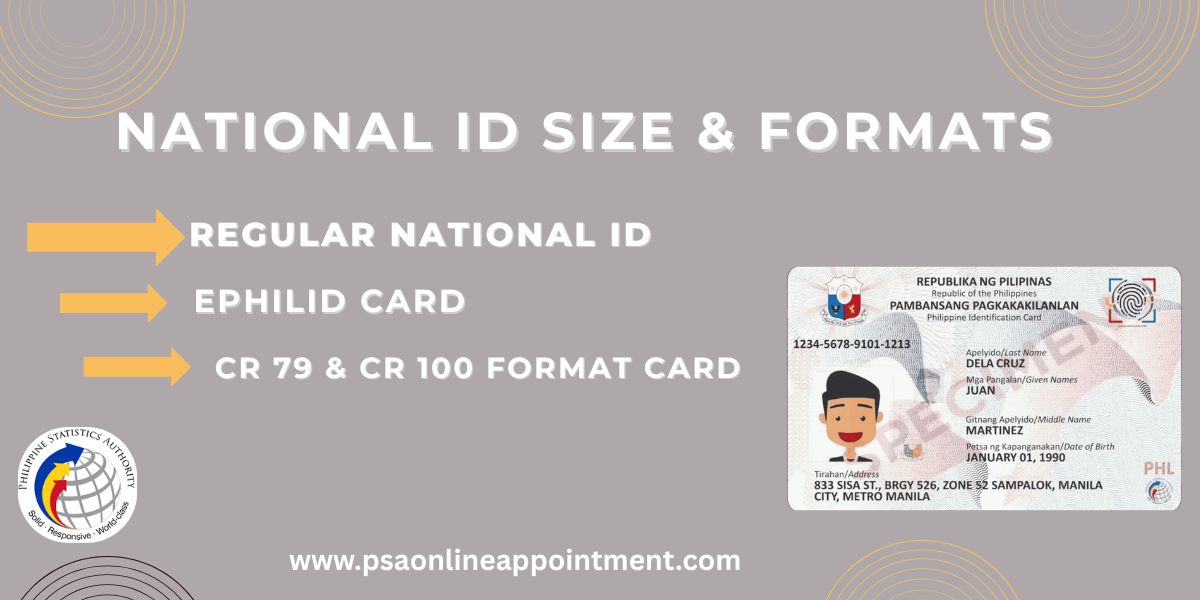Philippines National ID Size in 2025 Comprehensive Guide
In 2025, the Philippine government introduced the National ID system as part of the efforts to streamline identification processes across the country. This article will explain the dimensions, sizes, and formats of the Philippine National ID, covering various measurements in centimeters (cm), inches, and millimeters (mm). We will also explain the purpose and functionality of this identification card. Check Digital National ID registration Download process.
The Philippine National ID follows the CR80 format with dimensions of 3.375 inches x 2.125 inches (85.60 mm x 53.98 mm), a globally recognized size used for identification cards. It comes in both physical and digital formats (ePhilID), with the latter enabling online transactions. Specialized formats like CR79 and CR100 are used for specific applications such as access control and high-visibility events. This guide covers the National ID sizes in inches, centimeters, and millimeters, along with the ePhilID and its usage for accessing government services.
National ID Size Specifications
The National ID in the Philippines follows specific dimensions that ensure it is compatible with international standards, while also catering to local needs. The card is designed to be compact and easy to carry, and its dimensions are aligned with global card size specifications. Let’s have a look at the sizes and formats of the National ID.
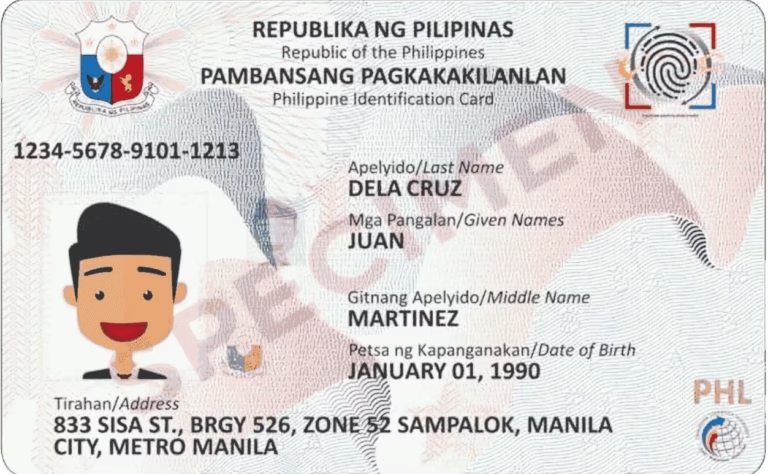
1. National ID Size in Inches
The National ID size in inches follows the CR80 standard format. This is the most commonly used size for identification cards worldwide, including the Philippines. The size of the National ID card in inches is:
- 3.375 inches x 2.125 inches
This size is identical to a standard credit card, making it easy to store in wallets or cardholders.
2. National ID Size in Centimeters (cm)
For those who prefer metric units, the National ID card size in centimeters is as follows:
- 8.56 cm x 5.4 cm
This measurement corresponds with the standard size of ID cards used in the Philippines and other countries, which ensures compatibility with various card printers and laminators.
3. National ID Size in Millimeters (mm)
The National ID size in millimeters is also in line with global standards for ID cards. The dimensions are:
- 85.60 mm x 53.98 mm
These measurements match the ISO/IEC 7810 ID-1 format, which is the international standard for identification cards.
Size of National id Height and Width
The Height and Width of the National ID of Philippines is given below.
- Height: Approximately 54mm (2.125 inches)
- Width: Approximately 85.6mm (3.375 inches)
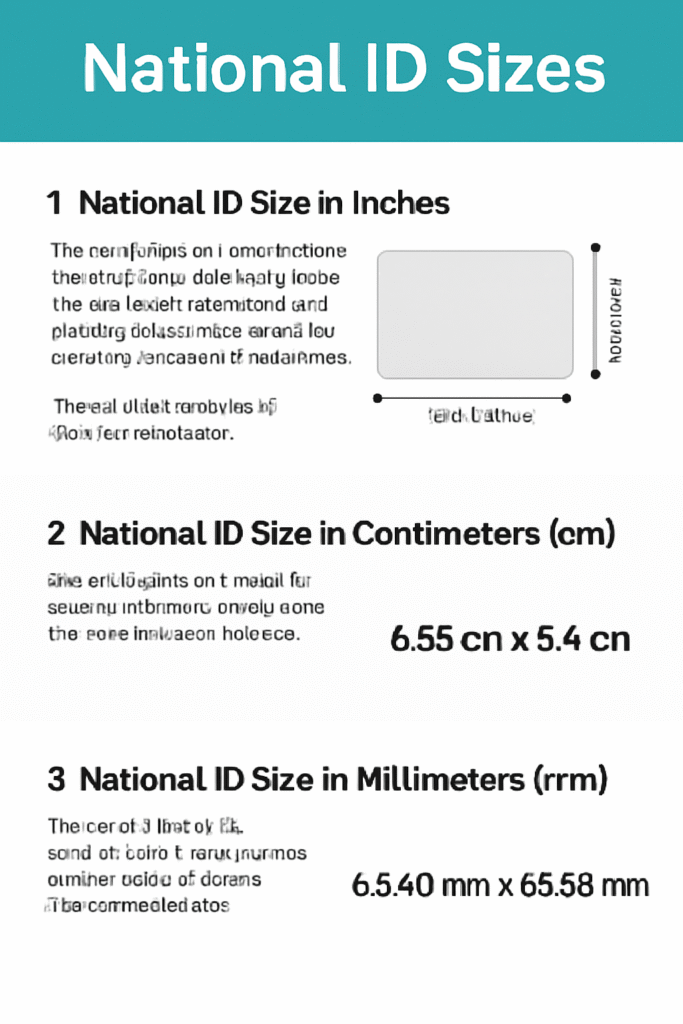
Types of National ID Cards in the Philippines
The Philippine National ID System includes different types of cards to accommodate various needs. The primary National ID is issued in the CR80 format, which is used by the majority of citizens. However, other card types may also be issued in special cases.
Regular National ID Card
The most common form of the National ID is the regular PhilSys ID card. This is the card issued to most Filipino citizens and residents. It is the CR80 size and is used for identification purposes across various sectors, such as government services, healthcare, banking, and more.
ePhilID (Electronic National ID)
An alternative format is the ePhilID or digital National ID. This is a digital version of the National ID and can be accessed through mobile devices and online platforms. The ePhilID can be used for digital transactions, although it is not universally accepted in all situations, especially in areas requiring physical proof of identity.
CR79 cards
CR79 cards measure 3.303 inches x 2.051 inches (84 mm x 52 mm), making them slightly smaller than the standard format. These cards typically feature adhesive backing and are commonly used for proximity cards and access control systems.
CR100 Card
The CR100 format measures 3.88 inches x 2.63 inches (100 mm x 70 mm), representing a 42% increase over standard cards . These oversized cards are often called “military-size” cards and are used for conventions, trade shows, and situations requiring high visibility .
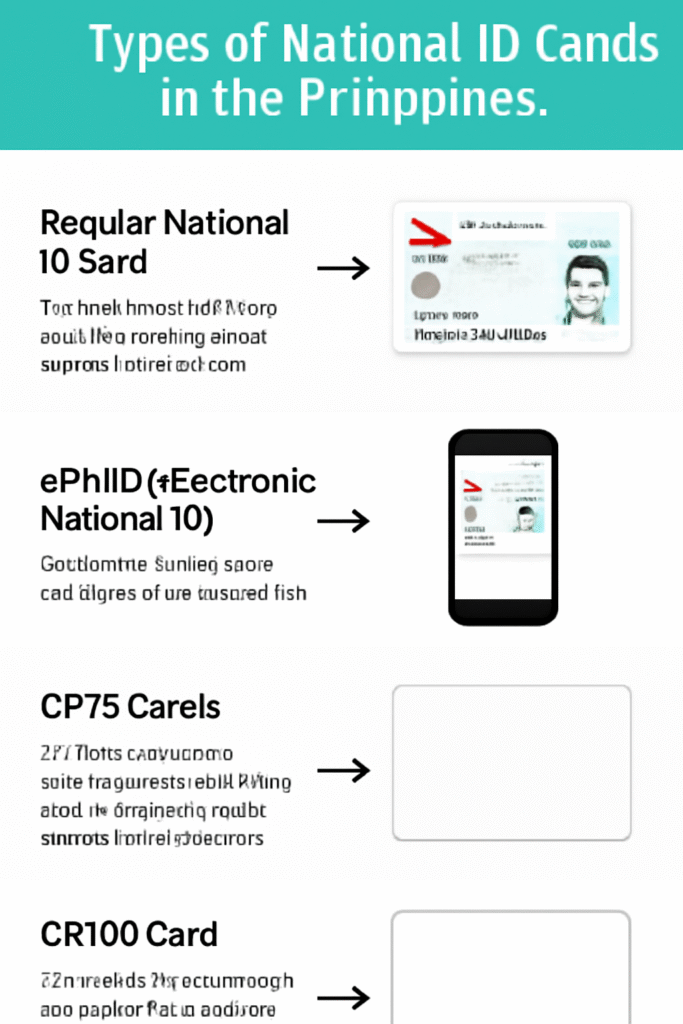
Purpose and Functionality of the National ID Card
The National ID plays a vital role in the Philippines, aiming to simplify the identification process, enhance public service efficiency, and improve security. Below are some of the key purposes and functionalities of the National ID:
Standard Identification
The primary purpose of the National ID is to serve as a standardized form of identification for Filipino citizens and resident aliens. It provides a unified identification number, making it easier for individuals to access government services, healthcare, banking, and more.
Access to Government Services
The National ID is widely used to access various government services. It is required for a range of services, such as applying for a passport, receiving social welfare benefits, and enrolling in government programs like the PhilHealth and SSS.
Security and Privacy
The National ID is equipped with features that enhance security and privacy. These include biometric data (such as fingerprints and facial recognition) that are securely stored to prevent identity theft and fraud. The card also includes a unique ID number that can be used for verification purposes in transactions.
Financial Transactions
The National ID can be used in financial transactions, particularly in opening bank accounts and applying for loans. By consolidating multiple identification numbers into one ID, individuals can avoid the need for various documents when dealing with financial institutions.
Social Welfare Benefits
The National ID is also used to streamline the disbursement of social welfare programs. For example loan payments, which are linked to the National ID, can be tracked and distributed more efficiently.
National ID Card Format
The Philippine National ID card is made of PVC plastic, ensuring durability and flexibility. It follows ISO/IEC 7810 standards, making it compatible with card readers, printers, and other equipment used for identification and verification.
Additionally, the National ID is available in both physical and digital formats:
- Physical Format: The traditional plastic card that can be carried in a wallet.
- Digital Format (ePhilID): This format allows users to access their ID digitally via smartphones and computers for various online services.
Conclusion
In conclusion, the Philippine National ID is an essential part of the country’s identification system. Its standard dimensions in inches (3.375″ x 2.125″), centimeters (8.56 cm x 5.4 cm), and millimeters (85.60 mm x 53.98 mm) ensure compatibility with international systems while meeting local requirements.
The ID serves multiple purposes, from streamlining access to government services to enhancing security and privacy for citizens. The introduction of both physical and digital formats provides flexibility for users, making it easier to carry and use the ID in various situations. Use national ID scanner and scan easily.
National ID Card Size Table Summary
| Measurement Unit | Size | Equivalent in Other Units | Common Uses |
|---|---|---|---|
| Inches | 3.375″ x 2.125″ | 3.375 inches x 2.125 inches | Standard for most National IDs worldwide, including the Philippines |
| Centimeters | 8.56 cm x 5.4 cm | 8.56 cm x 5.4 cm | Used for metric conversions, common in global ID systems |
| Millimeters | 85.60 mm x 53.98 mm | 85.60 mm x 53.98 mm | Standard ISO/IEC 7810 ID format |
| Thickness | 0.76 mm (30 mil) | 0.76 mm | Typical thickness for standard National ID cards |
FAQs About the Philippine National ID
1. What is the National ID size in inches?
The Philippine National ID follows the CR80 format, with a size of 3.375 inches x 2.125 inches.
2. What is the National ID size in centimeters?
The National ID size in centimeters is 8.56 cm x 5.4 cm.
3. How long is the validity of the National ID?
The National ID in the Philippines is valid for lifetime unless it is lost, stolen, or damaged.
4. Can I use the digital National ID for transactions?
Yes, the digital National ID can be used for certain online transactions, although it may not be accepted everywhere, especially where physical IDs are required.
5. What should I do if my National ID is lost or stolen?
If your National ID is lost or stolen, you should immediately report it to the authorities and request a replacement.
6. Can I print my digital National ID?
Yes, you can print your digital National ID, but some establishments may still prefer the physical card for transactions.
